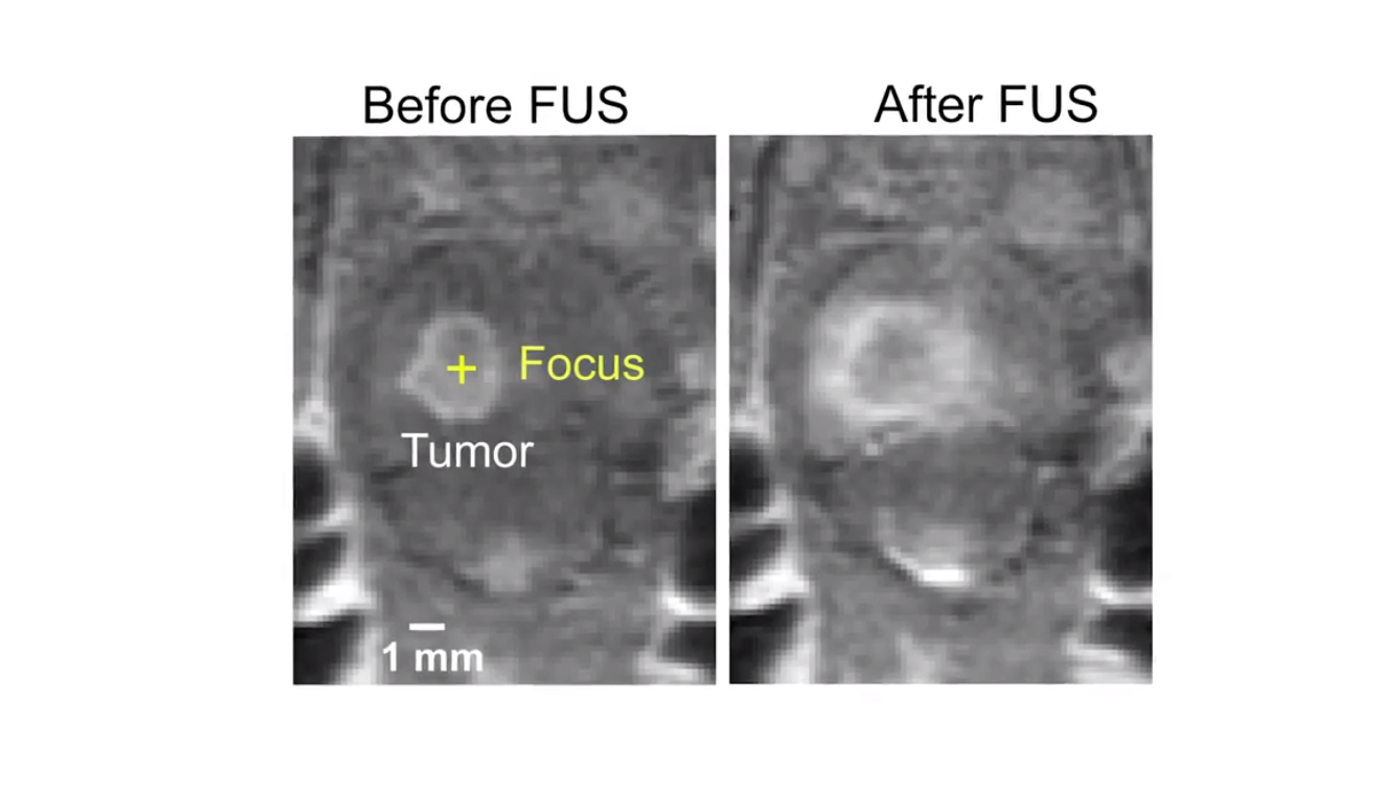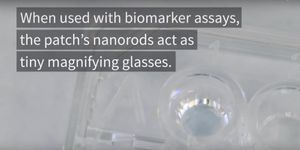Bubbles and a blood test could detect brain tumors
Researchers have developed a proof-of-concept technique that allows them to detect brain tumor biomarkers with a simple blood test, rather than a complicated, invasive surgical process.
Hong Chen, a biomedical engineer, and Eric C. Leuthardt, a neurosurgeon, led a team of engineers, physicians, and researchers who developed the technique, which allows biomarkers from a brain tumor to pass through the tough blood-brain barrier into a patient’s blood using noninvasive focused ultrasound and some tiny bubbles, potentially eliminating the need for a surgical biopsy.
Chen, assistant professor of biomedical engineering in the School of Engineering & Applied Science and of radiation oncology in the School of Medicine at Washington University in St. Louis, says while researchers have already learned how to get a drug through the blood-brain barrier into the brain via the bloodstream, no one—until now—has found a way to release tumor-specific biomarkers—in this case, messenger RNA (mRNA)—from the brain into the blood.
“I see a clear path for the clinical translation of this technique,” says Chen, an expert in ultrasound technology. “Blood-based liquid biopsies have been used in other cancers, but not in the brain. Our proposed technique may make it possible to perform a blood test for brain cancer patients.”
The blood test would reveal the amount of mRNA in the blood, which gives physicians specific information about the tumor that can help with diagnosis and treatment options.
Popping bubbles
Chen; Leuthardt, professor of neurological surgery in the School of Medicine; and colleagues tested their theory in a mouse model using two different types of the deadly glioblastoma brain tumor. They targeted the tumor using focused ultrasound, a technique that uses ultrasonic energy to target tissue deep in the body without incisions or radiation. Similar to a magnifying glass that can focus sunlight to a tiny point, focused ultrasound concentrates ultrasound energy to a tiny point deep into the brain.
Once they had the target—in this case, the brain tumor—researchers then injected microbubbles that travel through the blood similar to red blood cells. When the microbubbles reached the target, they popped, causing tiny ruptures of the blood-brain barrier that allows the biomarkers from the brain tumor to pass through the barrier and release into the bloodstream. A blood sample can determine the biomarkers in the tumor. This technique could lead to personalized medicine.
“In many ways this has been a holy grail for brain tumor therapy,” Leuthardt says. “Having the ability to monitor the changing molecular events of the tumor in an ongoing way allows us to not only better diagnose a tumor in the brain, but to follow its response to different types of treatment.”
“Once the blood-brain barrier is open, physicians can deliver drugs to the brain tumor,” Chen says. “Physicians can also collect the blood and detect the expression level of biomarkers in the patient. It enables them to perform molecular characterizations of the brain tumor from a blood draw and guide the choice of treatment for individual patients.”
Combined with immunotherapy
In addition, coauthor Gavin Dunn, assistant professor of neurosurgery, plans to use the technique with immunotherapy, which offers precision treatment that targets specific biomarkers in the brain.
“This noninvasive focused ultrasound-enabled liquid biopsy technique can be useful for long-term monitoring of brain cancer treatment response, where repeated surgical tissue biopsies may not be feasible,” Chen says.
“Meanwhile, variations within tumors pose a significant challenge to cancer biomarker research. Focused ultrasound can precisely target different locations of the tumor, thereby causing biomarkers to be released in a spatially-localized manner and allow us to better understand the spatial variations of the tumor and develop better treatment.”
The team continues to work to refine the process. The future will require integration with advanced genomic sequencing and bioinformatics to enable even more refined diagnostics.
“Our ongoing work is to optimize the technique and evaluate its sensitivity and safety,” Chen says.
The researchers report their findings in the journal Scientific Reports.
Washington University in St. Louis supported the research.
Source: Washington University in St. Louis
This article was originally published on Futurity.org









